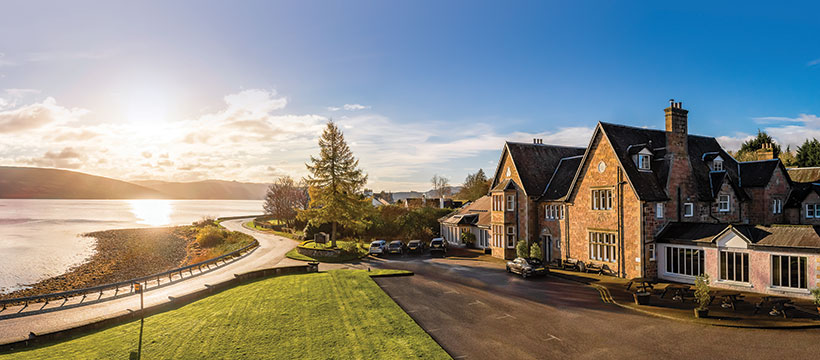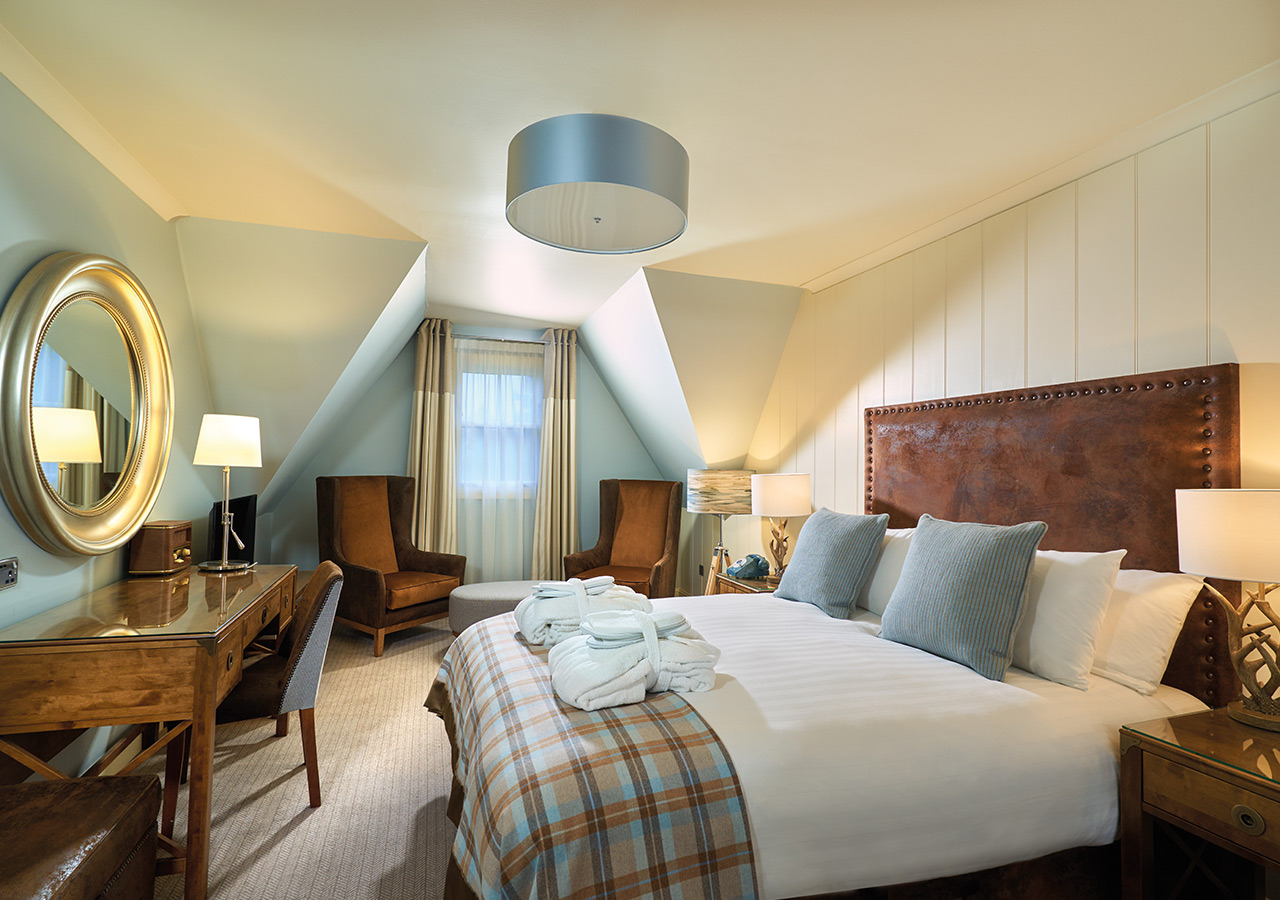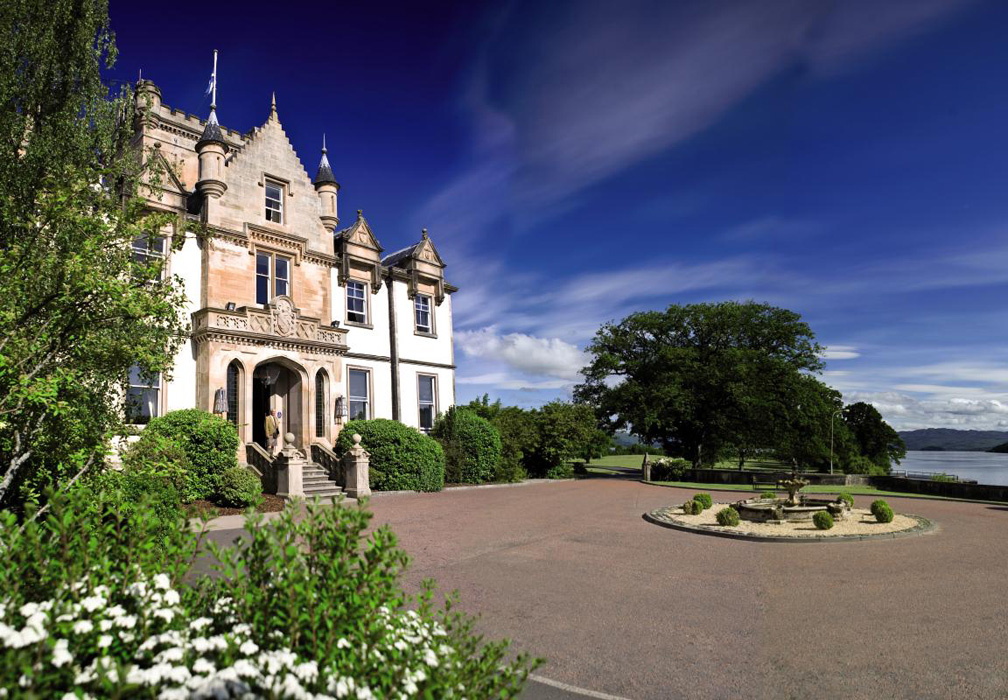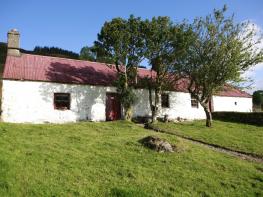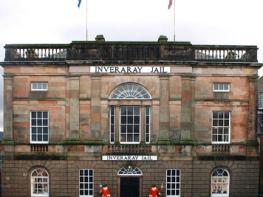Glendaruel Gardens, with an arboretum, is the peaceful setting for this pleasant, well…
From Puck's Glen to the Benmore Botanic Garden

The story of James Duncan, the man who altered the Cowal landscape
3.25 miles (5.4kms)
About the walk
Better known as the Younger Botanic Garden, after Harry George Younger who gifted his estate to the nation in 1925, the Benmore Botanic Garden is 120 acres (48.5ha) of the former estate. Extensive development since it became part of the Royal Botanic Garden, Edinburgh, has made it world famous for its plant collections. The remainder of the estate, including Puck's Glen, belongs to the Forestry Commission and their afforested hillsides provide a splendid backdrop to the garden's formal collections. Yet none of this would exist without the passionate commitment of a self-made Victorian merchant, James Duncan.
Transforming the Landscape
Duncan, who made his fortune from sugar refining at Greenock, purchased the Benmore Estate in 1870 and laid the foundations of the gardens. When Duncan came to Benmore the landscape was bare and uninteresting. He immediately extended the former Tower House to create the main part of Benmore House. Around the formal gardens he constructed countless ranges of heated glasshouses and, overhanging a ravine in Glen Massan, he established a fernery, the remains of which are still visible today. Acting on the advice of Sir Joseph Hooker, Director of the Royal Botanic Gardens at Kew, Duncan began to plant the collections of shrubs and trees which would provide the basis of the gardens.
Cowal's Golden Gates
Extensive drainage systems were developed throughout the estate and trees were planted on the bare hillsides. Between 1871 and 1883 Duncan planted some 1,600 acres (648ha). The total area stretched from the Strone of Clyde to the head of Loch Eck. When he had done there were a total of 6,480,000 trees, which remain a major feature of the present landscape of this part of the Cowal peninsula. Duncan also commissioned the Golden Gates for the Paris Exhibition of 1865. Made from wrought iron and painted gold with his initials worked into them, they were eventually erected near Glen Massan in 1873. A sociable man, Duncan entertained frequently and welcomed many visitors to Benmore, including Sir Henry Morton Stanley, the explorer, and Charles Haddon Spurgeon, the Billy Graham of his day, who preached to a crowd of 7,000 in the grounds of Benmore in 1877.
Lasting Memorial
Duncan died at Spean Bridge, near Fort William on 12 August, 1905, aged 81. His body was brought back to Cowal and is buried in the historic churchyard at Kilmun. It lies under a pink granite slab on a high part of the steep graveyard with a view looking across the Holy Loch. At the southern limit of his Kilmun estate, on the Strone peninsula at Graham's Point, an obelisk was erected to Duncan's memory and on it can be found the only known likeness of the man, carved in stone. But his real memorial is the garden at Benmore and the surrounding landscape.
Walk directions
From the car park, cross the A815 and follow the footpath past a waymarker for Black Gates. Pass a sign for the Big Tree Walk and turn right on to a surfaced lane. Continue along this lane for about 1 mile (1.6km) and just after the parapet of a bridge is the first footpath, which leads to Puck's Glen on the left.
There's a milestone here pointing to 'Dunoon Pier 6 miles'. Ignore this entrance and continue along the lane until you reach the car park. Turn left and along a footpath past the information boards for Puck's Glen. Climb uphill on a steep path.
At the top of the hill at a bench, as the path turns right, go straight ahead towards the gorge. Head back downhill, rather steeply on a series of steps with handrails to the bottom of the gorge. At the bottom of the steps turn right and head downhill on another set of steps. Cross a bridge on the left and turn right to head along a footpath on the opposite side of the stream.
Head uphill, cross another bridge, then go past a series of small waterfalls. Eventually reach a set of steps that takes you up a steep part of the hillside to another bridge at the top. After crossing it, the path levels out a bit and continues through the trees to then reach a T-junction with a forestry road.
At the junction turn left along the forest road. The Forestry Commission has installed a series of footpaths and this route can be shortened by taking any of the downhill paths that you'll find to the left. Continue on the forest road to a left turn marked by a blue and orange waymarker.
Follow this muddy downhill path as it winds down to a T-junction of paths and turn right. Continue winding downhill. On the way you will find a set of steps built over a fallen tree. Take time to climb the steps and read the interesting story of the magnificent Silver Fir, planted in 1870 and blown down in a storm in 1998. Continue on the path, eventually returning to the car park at Benmore Gardens.
Additional information
Mainly forest roads and well-made footpaths, 1 stile
Woodland
Keep dogs on lead
AA Leisure Map 27 Loch Lomond & Inverary
Car park at Benmore Botanic Garden
At Benmore Botanic Garden
WALKING IN SAFETY
Read our tips to look after yourself and the environment when following this walk.
Find out more
Also in the area
About the area
Discover Argyll & Bute
This is a county that’s all about awe-inspiring landscapes and unique island cultures. Ex-Beatle Paul McCartney put the area on the map when he wrote Mull of Kintyre, recorded in 1977 with the local pipe band backing his group. Kintyre is a long, thin peninsula that points south from the mainland, sheltering the mouth of the Firth of Clyde from the open sea. It’s very nearly an island, with just a narrow isthmus connecting it with Knapdale, to the north.
Tucked away at the end of the Firth of Clyde, Bute has been the holiday playground for generations of Glaswegians and is home to some of the finest golden beaches anywhere on the west coast. It may not boast the wild mountain grandeur of some of Scotland’s other islands, but Bute is blessed with swathes of heathery moorland and a range of low, fertile hills, perfect for walking and studying the local wildlife. Such is the variety of landscapes that make up this county.
To experience the sights and sounds of the area, visit Dunoon in late August for the Cowal Highland Gathering, when more than 150 pipe bands from all over the world compete for prestigious trophies.
Nearby stays
Restaurants and Pubs
Nearby experiences
Recommended things to do
Why choose Rated Trips?
Your trusted guide to rated places across the UK
The best coverage
Discover more than 15,000 professionally rated places to stay, eat and visit from across the UK and Ireland.
Quality assured
Choose a place to stay safe in the knowledge that it has been expertly assessed by trained assessors.
Plan your next trip
Search by location or the type of place you're visiting to find your next ideal holiday experience.
Travel inspiration
Read our articles, city guides and recommended things to do for inspiration. We're here to help you explore the UK.



